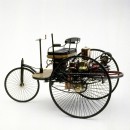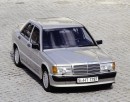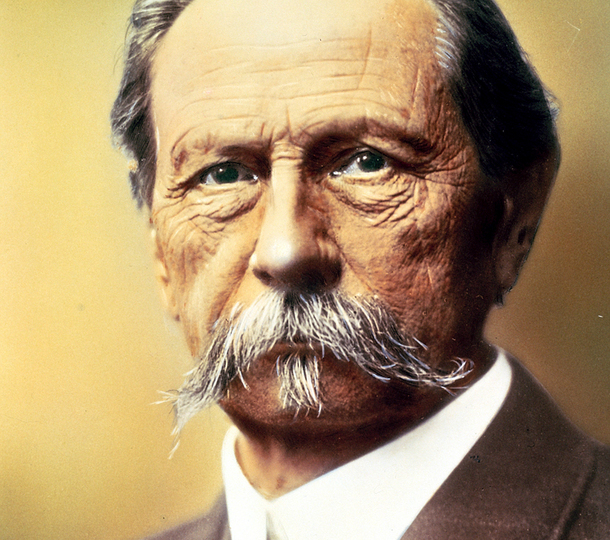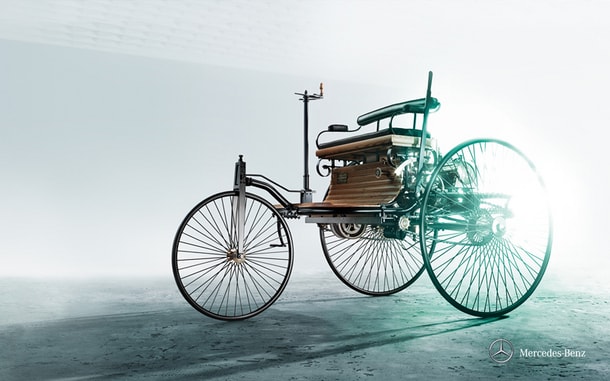More than a century ago, the world was entering a new era. The industrial revolution which preceded the modern era was about to end, but the innovative thinking that had propelled human kind to new peaks of development still gave birth to brilliant minds, coming from the most unlikely places.
Towards the end of the 1800s, machines slowly began taking over manufacturing, transport and warfare. Those years have been for the mechanized era, if it can be called that, what the 2000s have been for the computer age. Then, engineers, more or less educated in their respective fields, gave birth to machines that could fly, submerge or transform previously huge distances, which took days to cover, into hours of travel.
Towards the end of the 1800s, a new industry was born, thanks to the son of a locomotive driver. His name was Karl Benz (born Karl Friedrich Michael Vaillant, changed his name after the death of his father, Johann George Benz; also know as Carl Benz), and in 1886 he gave birth to a new industry, that thrives ever since, to new dreams and to a new way of life.
THE HISTORIC MAN
Karl Benz is the man regarded by most as the one who invented the automobile. The uncertainty comes from the relatively big number of people who, simultaneously and in an uncoordinated effort, where working on pretty much the same invention- the self-propelled machine. For instance, Nicolas-Joseph Cugnot developed the first such machine nearly a century before Benz, a military tractor powered by steam.
Born in 1844 in Baden Muehlburg, Germany, Benz was by no means part of the upper class. This, however, didn't stop his mother, Josephine Vaillant, from trying to provide the best possible education for her son. Having quite an appeal for mechanical engineering from a young age, the young German moved quickly from the scientific Lyceum school to the University of Karlsruhe. There, he studied mechanical engineering and graduated at the age of nineteen.
Fresh out of school, Benz tried to work for others (in companies which conducted business in just about every field of that time, from mechanical engineering to bridge building), but it quickly became obvious that working regular hours was not really his thing.
Having no real appetite for being employed, Benz was also facing an obvious money problem. He tried to solve it through various partnerships, and even through an engagement with Bertha Ringer, his soon-to-be wife. While the partnerships pretty much failed (starting with Gasmotoren Fabrik Mannheim), his engagement came through, in style, years later.
The first road block encountered by Benz in his quest for a self-propelled machine was called Gasmotoren Fabrik Mannheim, a company which he started together with August Ritter. The mechanical workshop, which was at the same time supposed to double as a construction materials supplier, soon became a major disaster because of the destructive combination between the personalities of Benz and Ritter.
After trying to fund the Gasmotoren Fabrik (with the considerable help of his soon-to-be) and unsuccessfully negotiating loan agreements which left him with only 5 percent of his own company, Benz decided a shift in direction was needed and abandoned the business one year after he created it, in 1883.
Having been, for as long as he could remember, a sucker for bicycles, Benz had always envisioned such a machine moving forward without the input of a human being. His bike-shops trekking made him cross paths, in 1883, with Max Rose and Friedrich Wilhelm Esslinger, a pair of a bike repair shop owners in Mannheim. Soon, the three hit it off and decided it’s time to think bigger.
Their combined minds gave birth, the same year, to the Benz & Company Rheinische Gasmotoren-Fabrik, an industrial machines and static gas engines manufacturer. This company was to become the starting point of the automotive evolution.
His design soon came to life as a three-wheeled carriage, equipped with wire wheels, just like in a bicycle. From the rear of the vehicle, a four-stroke engine with coil ignition and evaporative cooling sent the power to the wheels through two roller chains.
The machine was named the Benz Patent-Motorwagen (even if Bertha financed the design, she had no right to hold a patent for the vehicle because of the laws of that time). Benz took it to the Berlin Patent Office on January 29, 1886 and received the DRP-37435 patent for the "automobile fueled by gas." The pattent application can be found in the PDF attached on the last page of this coverstory (in German).
The beginning of the automotive age was, as is the case with pretty much all inventions, not so fortunate. The first automobile as we understand the term today (a machine which generates its own power) was presented to the public on July 3, 1886 on the Ringstrasse in Mannheim, but prior to that, the first drive of the model ended abruptly after the Motorwagen hit a wall (1885). It was, for all intents and purposes, the first recorded automobile accident.
Born in 1844 in Baden Muehlburg, Germany, Benz was by no means part of the upper class. This, however, didn't stop his mother, Josephine Vaillant, from trying to provide the best possible education for her son. Having quite an appeal for mechanical engineering from a young age, the young German moved quickly from the scientific Lyceum school to the University of Karlsruhe. There, he studied mechanical engineering and graduated at the age of nineteen.
Fresh out of school, Benz tried to work for others (in companies which conducted business in just about every field of that time, from mechanical engineering to bridge building), but it quickly became obvious that working regular hours was not really his thing.
Having no real appetite for being employed, Benz was also facing an obvious money problem. He tried to solve it through various partnerships, and even through an engagement with Bertha Ringer, his soon-to-be wife. While the partnerships pretty much failed (starting with Gasmotoren Fabrik Mannheim), his engagement came through, in style, years later.
The first road block encountered by Benz in his quest for a self-propelled machine was called Gasmotoren Fabrik Mannheim, a company which he started together with August Ritter. The mechanical workshop, which was at the same time supposed to double as a construction materials supplier, soon became a major disaster because of the destructive combination between the personalities of Benz and Ritter.
After trying to fund the Gasmotoren Fabrik (with the considerable help of his soon-to-be) and unsuccessfully negotiating loan agreements which left him with only 5 percent of his own company, Benz decided a shift in direction was needed and abandoned the business one year after he created it, in 1883.
Having been, for as long as he could remember, a sucker for bicycles, Benz had always envisioned such a machine moving forward without the input of a human being. His bike-shops trekking made him cross paths, in 1883, with Max Rose and Friedrich Wilhelm Esslinger, a pair of a bike repair shop owners in Mannheim. Soon, the three hit it off and decided it’s time to think bigger.
Their combined minds gave birth, the same year, to the Benz & Company Rheinische Gasmotoren-Fabrik, an industrial machines and static gas engines manufacturer. This company was to become the starting point of the automotive evolution.
THE HISTORIC MACHINE
It is now when the proverbial strong woman behind every great man stepped in. Bertha, Benz's wife, kept her confidence in her husband, despite the Gasmotoren Fabrik fiasco, and kept financing his dreams of creating a horseless carriage, as Benz called it. His idea was simple, and required combining a carriage and a bicycle with one of the gas engines produced by his new company.His design soon came to life as a three-wheeled carriage, equipped with wire wheels, just like in a bicycle. From the rear of the vehicle, a four-stroke engine with coil ignition and evaporative cooling sent the power to the wheels through two roller chains.
The machine was named the Benz Patent-Motorwagen (even if Bertha financed the design, she had no right to hold a patent for the vehicle because of the laws of that time). Benz took it to the Berlin Patent Office on January 29, 1886 and received the DRP-37435 patent for the "automobile fueled by gas." The pattent application can be found in the PDF attached on the last page of this coverstory (in German).
The beginning of the automotive age was, as is the case with pretty much all inventions, not so fortunate. The first automobile as we understand the term today (a machine which generates its own power) was presented to the public on July 3, 1886 on the Ringstrasse in Mannheim, but prior to that, the first drive of the model ended abruptly after the Motorwagen hit a wall (1885). It was, for all intents and purposes, the first recorded automobile accident.






















